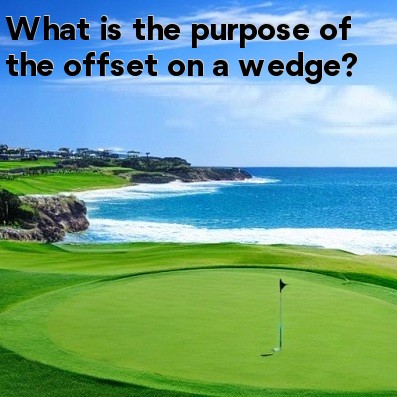
The Purpose of the Offset on a Wedge in Golf
In the world of golf, the design of golf clubs plays a crucial role in the performance and overall experience for golfers. Each type of club is specifically designed to serve a particular purpose, and wedges are no exception. One important feature that can be found on a wedge is the offset.
Offset refers to the positioning of the clubface in relation to the hosel and the shaft. In simple terms, it is the distance between the leading edge of the clubface and the front edge of the hosel. When looking at a wedge, you will notice that the leading edge of the clubface is set slightly behind the hosel.
The purpose of the offset on a wedge is to help golfers improve their ball striking and increase their chances of hitting accurate shots. Here are a few reasons why offset is beneficial:
- Alignment Assistance: The offset design helps golfers align the clubface more easily. By setting the leading edge slightly behind the hosel, it naturally encourages the golfer to square the clubface at impact. This alignment assistance can be particularly useful for players who struggle with consistently squaring the clubface, as it provides a visual aid for better alignment.
- Reduced Slices and Hooks: One of the common issues faced by golfers is slices or hooks, where the ball curves severely to the right or left, respectively. The offset design can help reduce these unwanted shot shapes by promoting a more square clubface position at impact. With the offset, the golfer has a better chance of hitting the ball straighter, minimizing the effects of slices or hooks.
- Improved Contact: The offset on a wedge can also contribute to better contact between the clubface and the ball. The offset design helps golfers in finding the center of the clubface more consistently. By aligning the clubface more properly at impact, golfers are more likely to strike the ball with the sweet spot of the club, leading to better distance control and more consistent ball flight.
It is important to note that while offset can be beneficial, it may not be suitable for every golfer. Golfers who tend to hook the ball excessively or who prefer a more traditional look at address may choose to avoid clubs with significant offset. However, for many golfers, especially those seeking forgiveness and assistance with alignment, the offset design on wedges can be a valuable asset.
It is worth mentioning that the amount of offset can vary between different wedges and manufacturers. The ideal level of offset often depends on a golfer's swing tendencies and personal preference. Trying out different wedges with varying levels of offset can help golfers find the right balance that suits their game.
In conclusion, the offset on a wedge plays a crucial role in improving ball striking and accuracy for golfers. It provides alignment assistance, helps reduce slices and hooks, and contributes to improved contact with the ball. Golfers can benefit from understanding the purpose of offset and experimenting with different levels to find the perfect wedge for their game.





